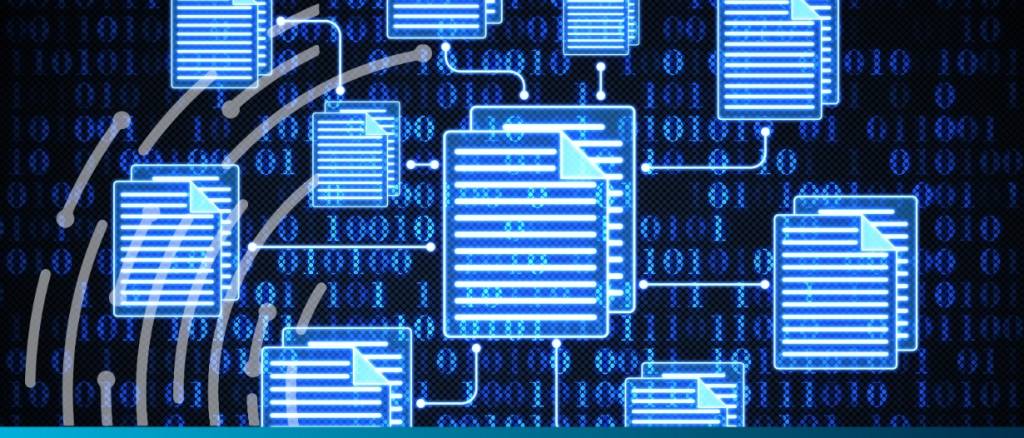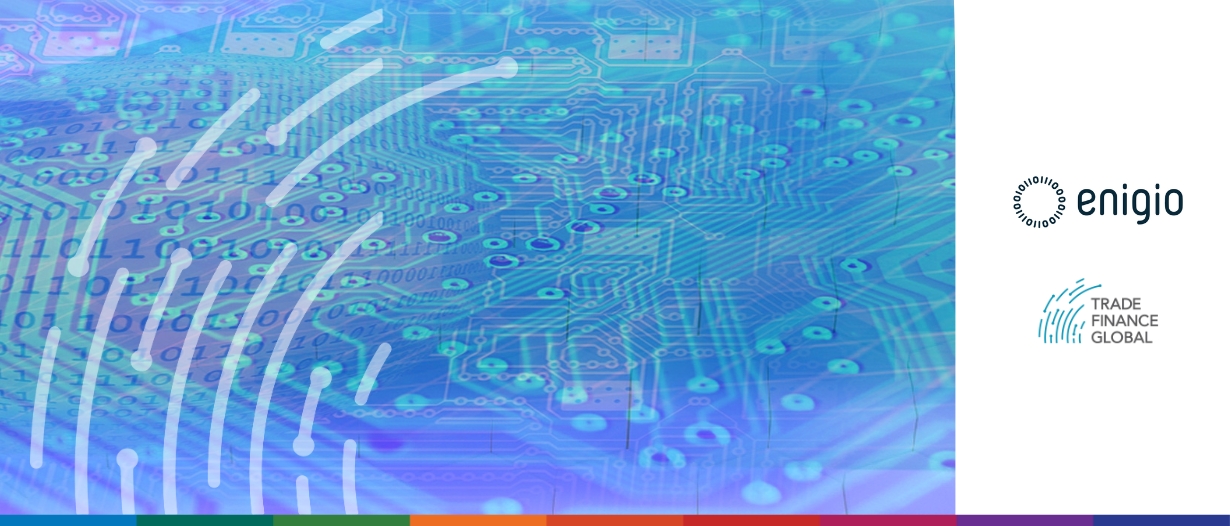Estimated reading time: 6 minutes
Listen to this podcast on Spotify, Apple Podcasts, Podbean, Podtail, ListenNotes, TuneIn
Digitalising trade has been a prominent feature of industry conversations for several years. With the passage of the Electronic Trade Documents Act (ETDA) in the UK, as well as the progression of similar bills in countries including the US, Germany, France, and Bahrain.
Conversations have progressed from simple questions of “how to digitalise trade”, to focusing on what the concrete next steps should be.
These next steps in the digitalisation journey are critical, with no room for complacency, as stakeholders need to make laws work and ensure the construction of a better, more resilient industry.
One of the key next steps is understanding how to actually utilise the data and how deeper information can be built off the back of the digitalised format.
To unpack these issues, TFG’s Brian Canup was joined by Patrik Zekkar, CEO of Enigio, to break down the complex next steps of digitalising trade.
Enigio: Going beyond the surface level of digital trade documents
Enigio is a Swedish-based tech company focussing on formulating digital original documents suitable for trade transactions. Enigio’s trace:original technology provides all the qualities of paper in a digital, end-to-end, form.
Key questions regarding this process concern how the data is gathered from digital trade documents and the next steps after obtaining the data, as ease of data collection is essential to efficient digitalisation processes.
Here, it is useful to understand the process behind the data gathering.
The first phase is the application or request to start the process. Secondly, there is a processing or operational step, third is the execution of a transaction. Enigio’s trace:original “docks in” to the execution phase, maintaining the core process whilst changing the outcome, i.e., moving from paper to digital.
Enigio is able to do this using a range of simple APIs, or customers can continue to use PDFs and upload them onto the trace:original platform. There is also the opportunity to provide manual entries to the trace:original standalone module.
Zekkar said, “We have provided all optionalities from manual to fully integrated. Another part is also how you either go from structured data to a document, or from a document to structured data. Both ways work.”

Security and privacy of digitalised documentation
However, understanding the process of digitalising trade documents is only one part of the story. Concerns regarding security are common, as this is still a relatively new process.
Enigio takes several steps to ensure the gathered data is secure and prevents any privacy concerns for clients. Zekkar said, “That is a fundamental part of how we have set up trace:original and where we differ from other providers in the market. For us, it is key that all data stays in the documents – we are a document-centric solution.”
To ensure there is maximum security, Enigio only stores the data in the actual document. There is no need to upload data to the platforms.
Zekkar said, “Enigio neither holds nor has access to any data. Only the person in possession of the document controls the data and the data sharing through the document. If you think about it, it is just like paper.”
It is important for the industry to be educated in this regard, with sharing data online still being a new reality for many stakeholders. These security elements are critical to communicate in this context in order to better utilise digital processes.
Applications to ESG metrics
The data gathered through Enigio’s portal can also be used to provide ESG metrics more efficiently. In trade transactions, there are more data receivers than data providers.
Zekkar said, “In a trade chain, you have a couple of parties which actually provide the trade data, but you have a lot of parties that need to consume that data, and they do it for various purposes.”
One example of this is ESG. Here, trace:original allows the merging of the digital and sustainable agendas into a unified goal. This is because the data in a trade document is comprehensive, with a lot of detail required in the set of trade documents.
Zekkar said, “The challenge is to consume that data and extract the part which is relevant for each part easily. That is what trace:original makes possible with the structured data part on the back of the document. For example, take ESG scoring: if you have a set of trade documents such as the bill of lading without the attached documents (packaging list, invoices, certificates etc.), and you are able to capture these data points from the document, that enables you to do all types of [ESG] scoring.”
These include carbon emissions calculations which can be done independently on single transactions. Moreover, digitalising the e-bill of lading and other trade documents instantly provides the opportunity for businesses to score single trade transactions, giving every party in the chain the possibility to see what type of transaction is being dealt with.
Digitalising trade not only increases efficiency but there are clear environmental benefits as well.
The most prominent statistic emerging from the signing of the ETDA is that nearly 3 million trees are used every year when it comes to creating paper documents for trade. However, there is an additional layer adding to the benefits of digitalising trade related to the scoring metrics using data.

Prospects for efficiency, collaboration, and outlook for the sector
Additionally, digitalisation adds significant value through tracking how goods are transported. Digitalisation enables analysis of processes that allow the identification of improved transport methods and techniques.
There are also indirect efficiency gains, including the possibility to use data for singular ESG scoring with the help of electronic trade documents feeding an AI engine scoring model and how these elements interact with the actual supply chain.
This can also involve port and customs authorities, and customs duties. Here, clearance time, security and risk based assessments in customs controls using AI technology, as well as accessing the structured data that is pulled from the trade document itself by trace:original, present huge possibilities for reduction in delays of customs clearance.
Tackling efficiency problems in international trade will take an industry-wide effort. Zekkar said, “We know trade is a multiparty, international, and fragmented industry.”
These include trade associations and governmental bodies, who are particularly useful in terms of raising awareness and driving regulatory changes.
Though there have been positive developments in this area, further collaboration is needed, according to Zekkar, in order to remove the ”daily roadblocks” to trade activity, particularly focussed on port and customs authorities’ processes and procedures.
Zekkar said, “The exciting and very encouraging development is how we mature and develop in using the data downstream – the data which is now possible to get in a usable, flexible, and controllable form.”
Releasing this “goldmine” of data for downstream applications – from AI to hardware – presents significant potential benefits for both the public and private sectors in terms of accessing data in a controllable, usable, and flexible form.
Zekkar said, “I think it is really what is going to make the industry take a huge step forward.”





















